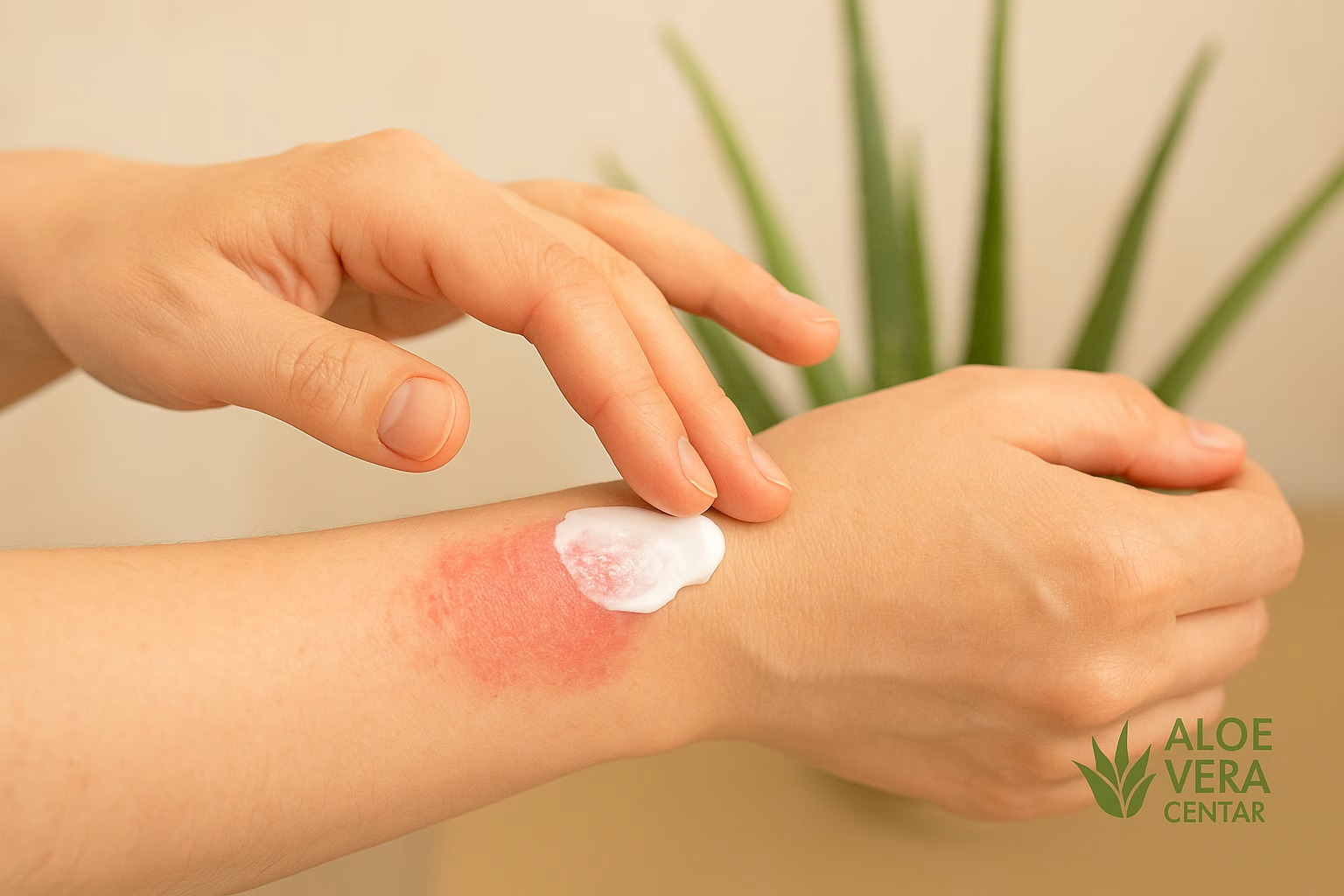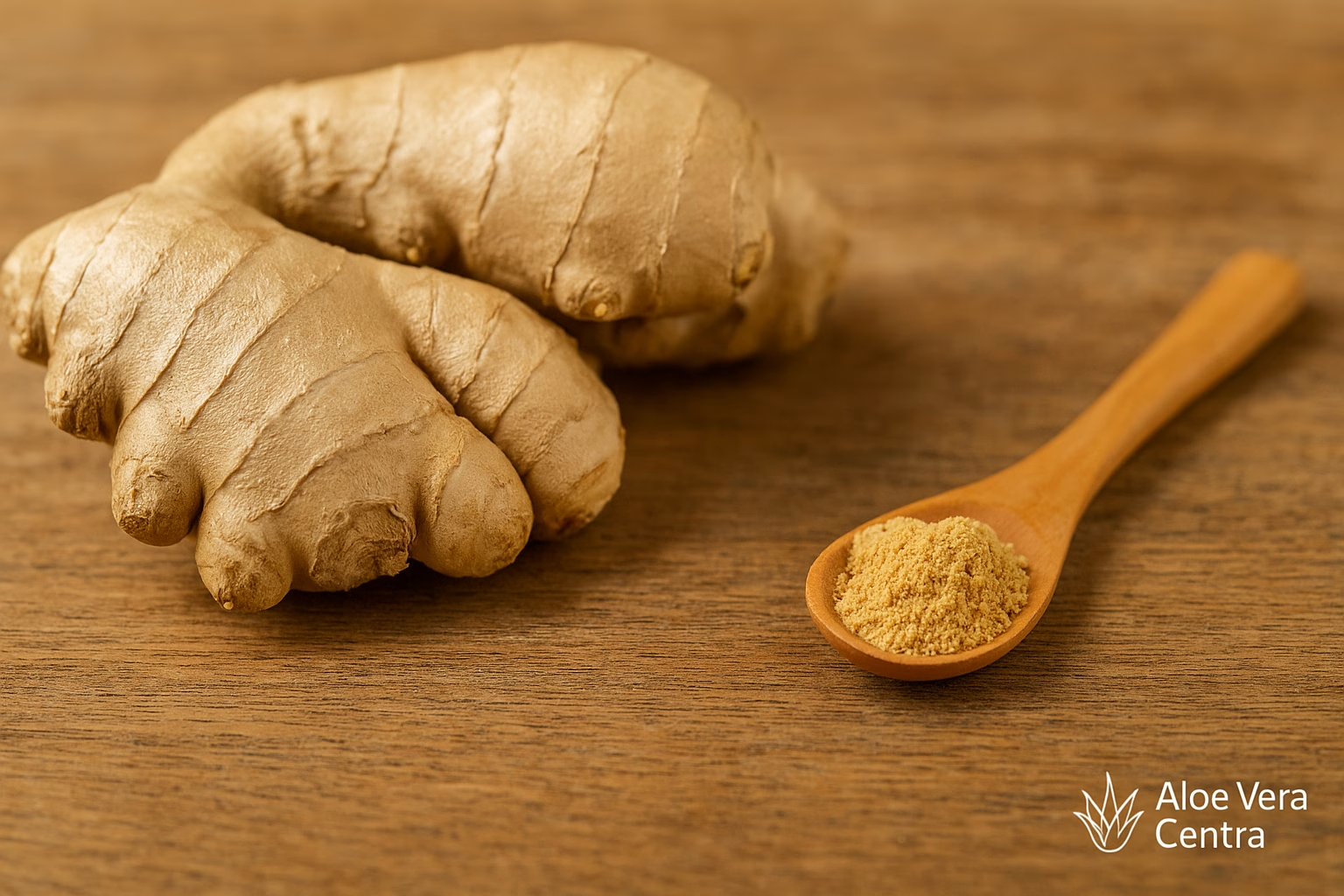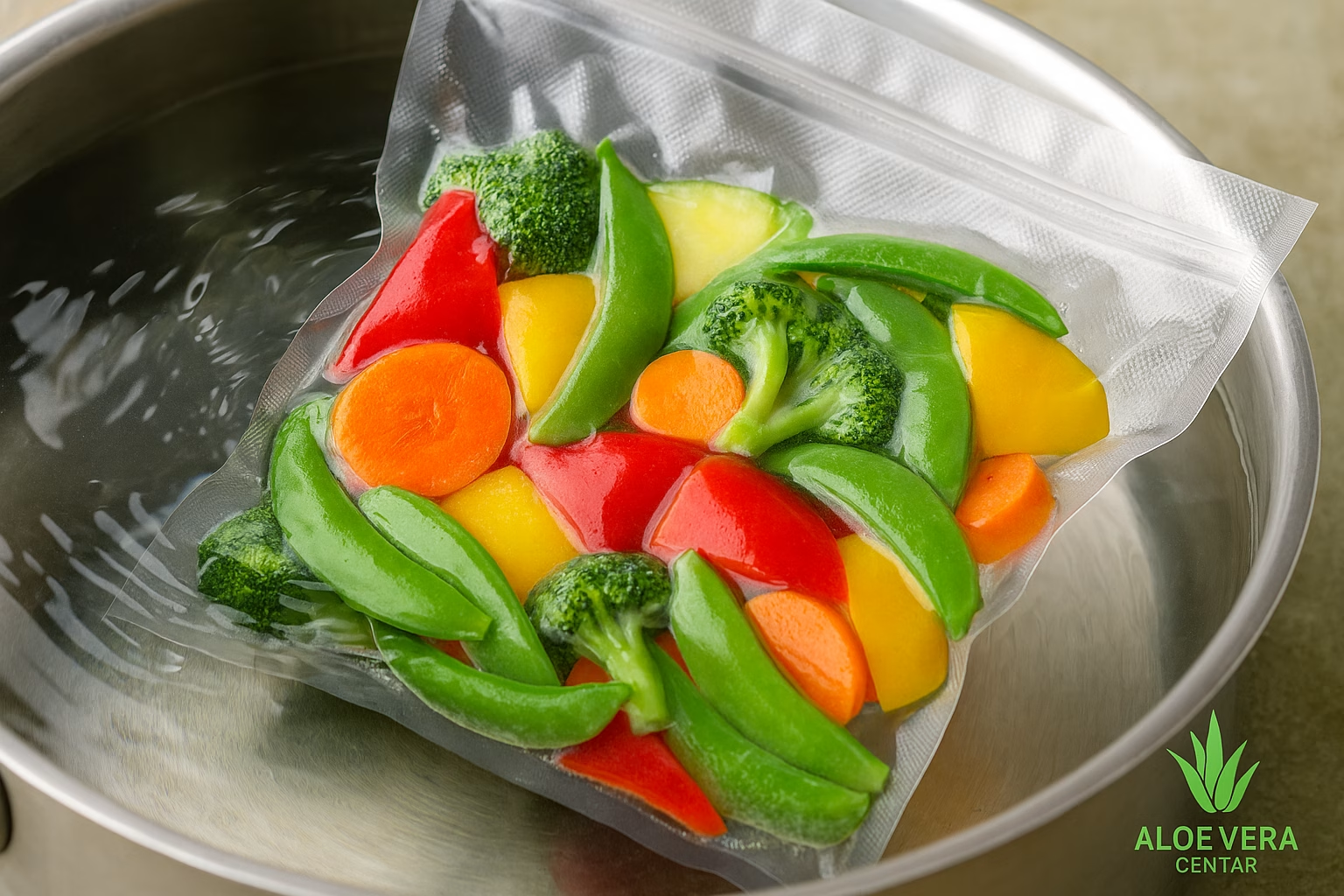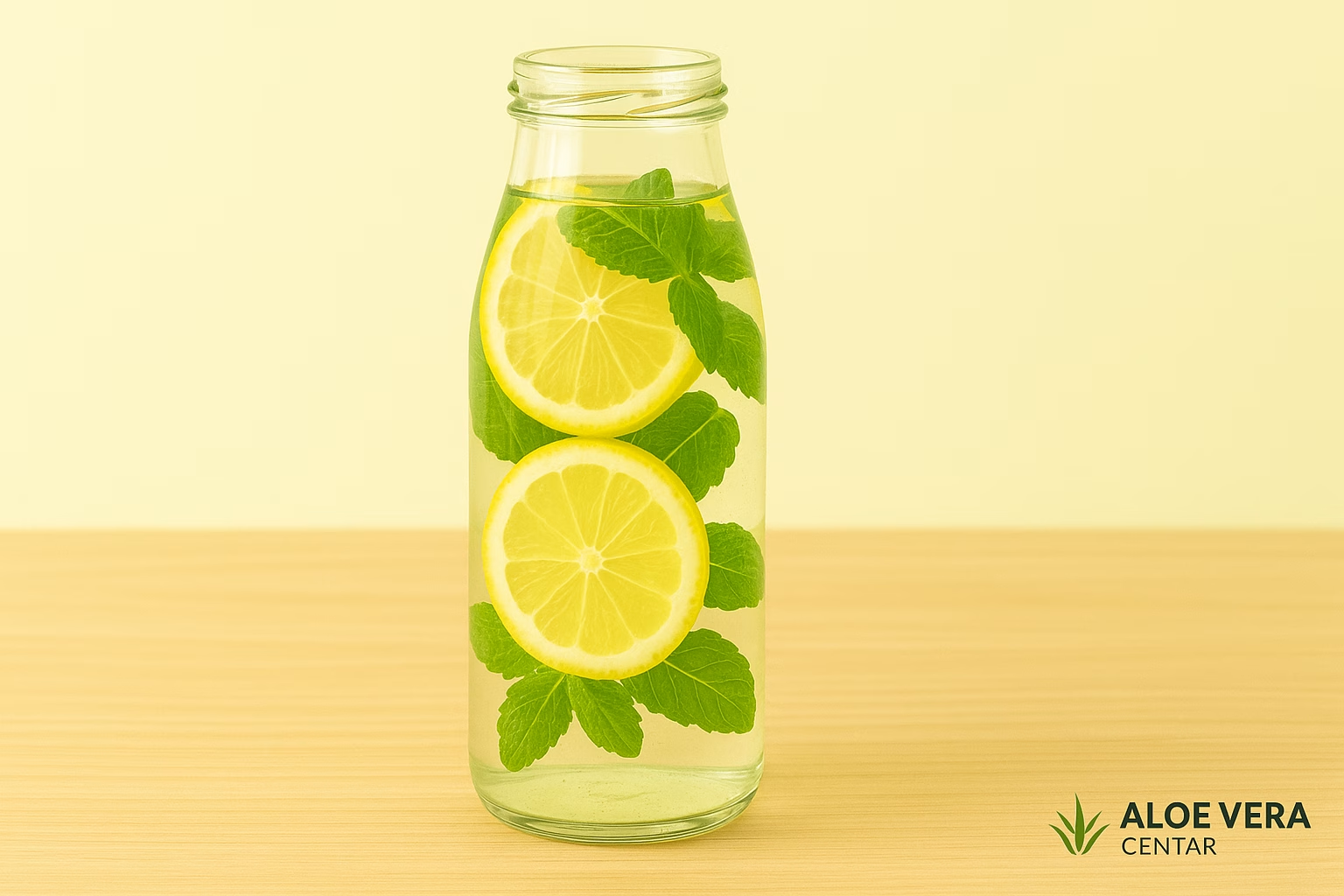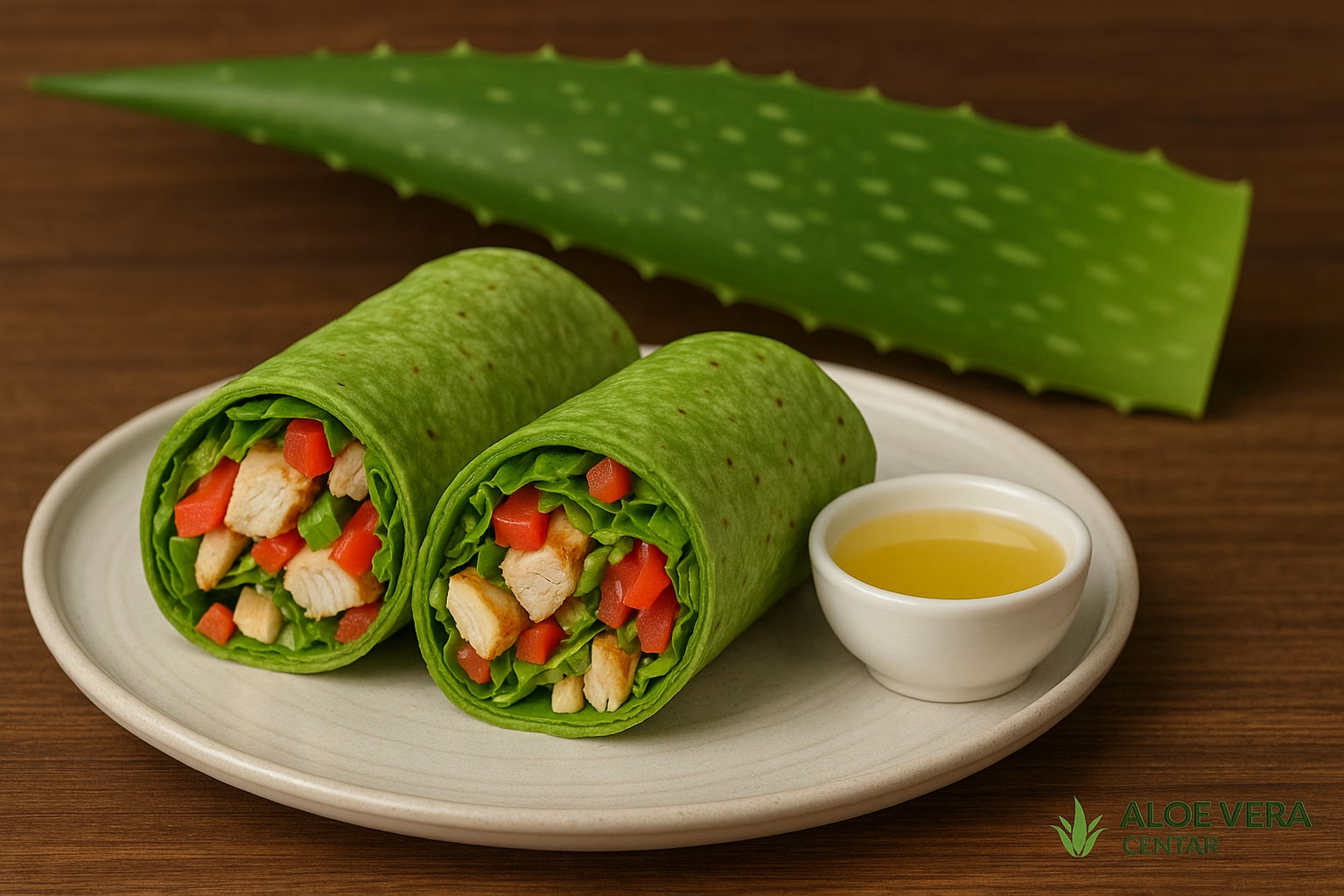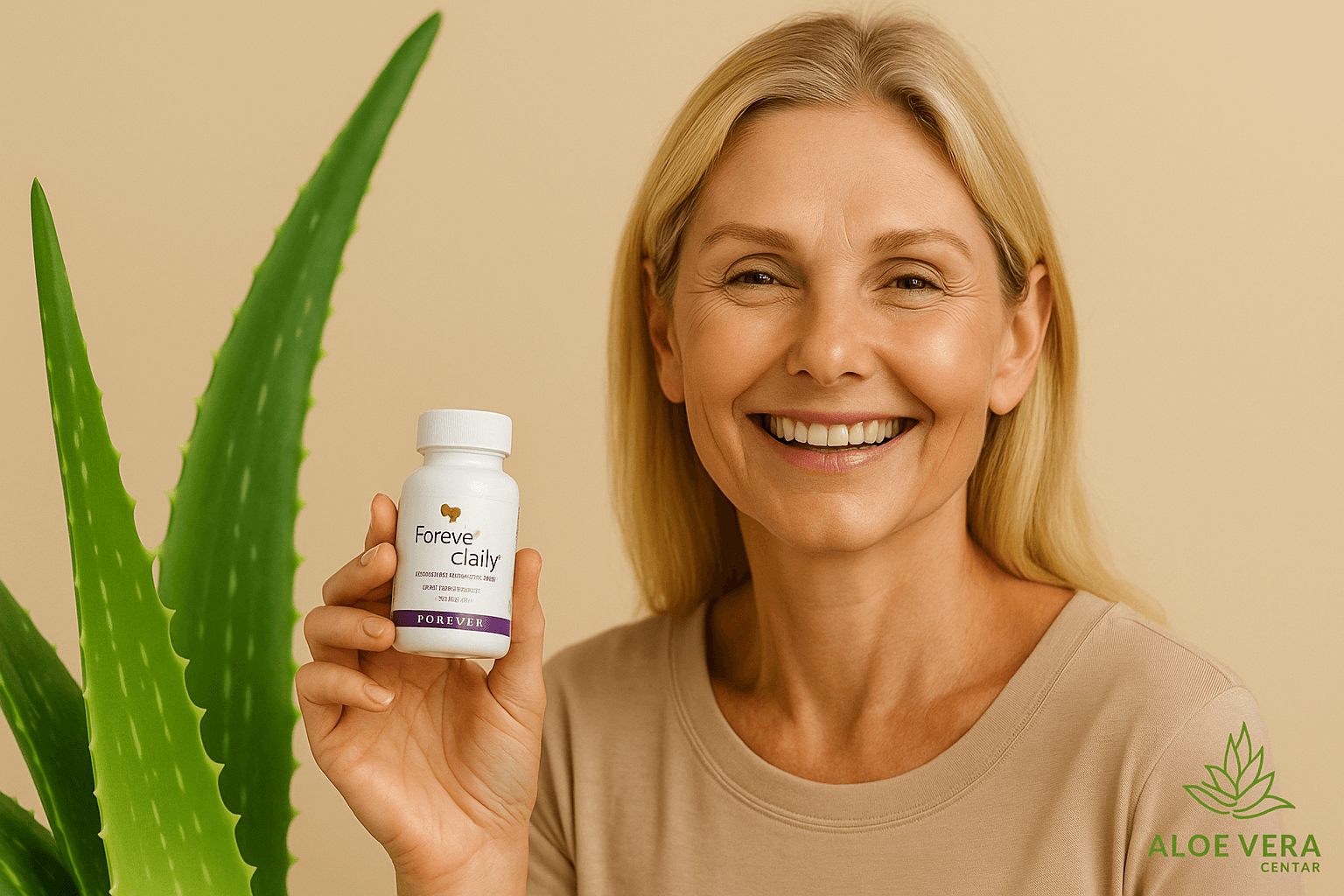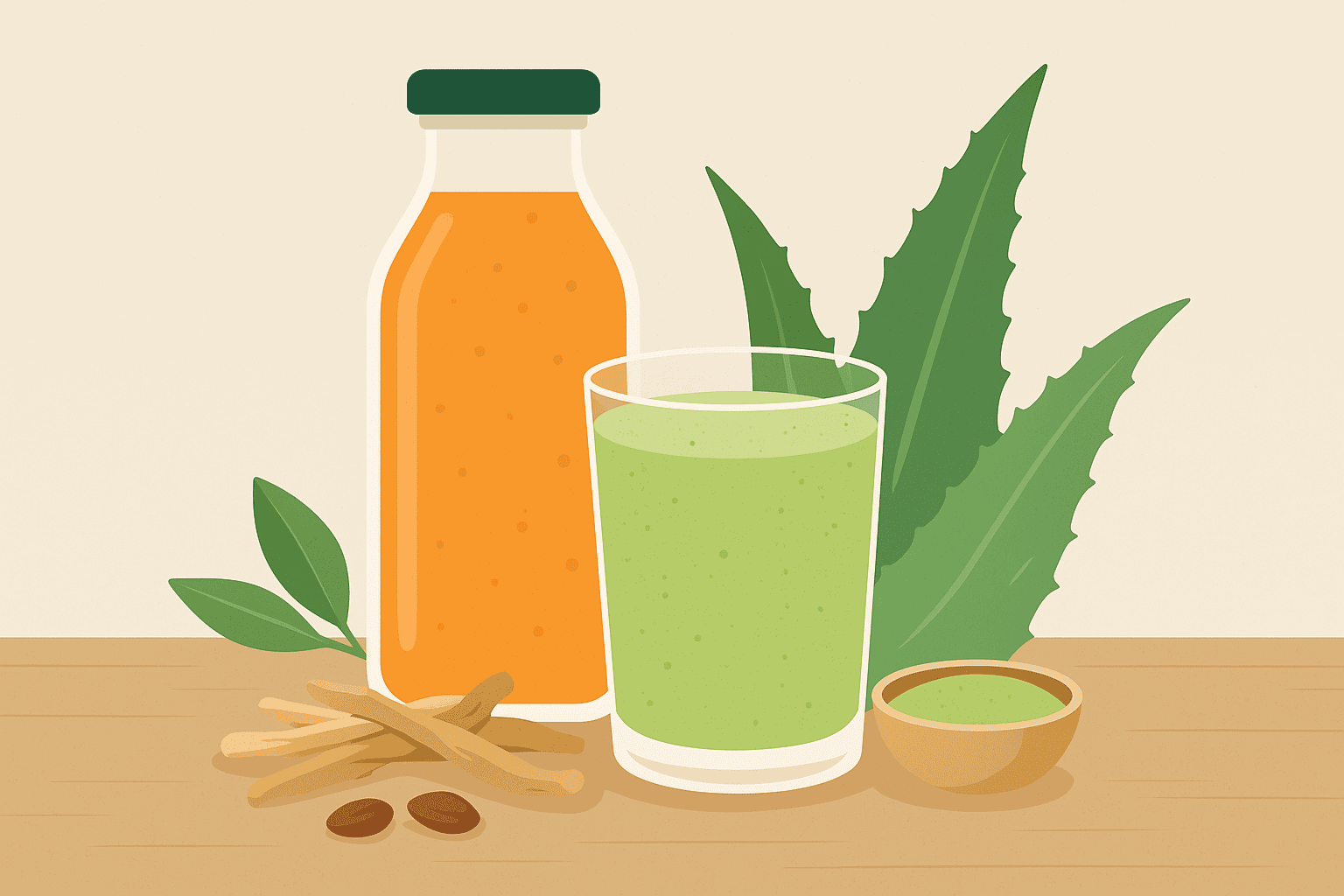
Smoothie or juice? Advantages, disadvantages and where does aloe fit in
Smoothie or juice? Advantages, disadvantages and where does aloe fit in
Have you ever wondered which is better for you – a **smoothie** or a **juice**? In the world of healthy drinks, this is one of the most common questions we encounter. On the one hand, a smoothie is thick, creamy and packed with fiber because the whole fruit or vegetable is processed in a blender, while a juice only extracts the liquid and the pulp is separated. But there are broader implications to these differences. Namely, choosing between a smoothie and a juice can affect blood sugar levels, micronutrient intake, feelings of satiety and, of course, culinary enjoyment.
In this article, we’ll go over all the important aspects of these two popular drinks: we’ll compare their pros and cons , advise you on which option to choose depending on your goals, and show you how aloe vera, especially known for its centuries-old use in folk medicine, can further enrich both smoothies and juice. Through a review of scientific research, practical recipes, and advice on dietary supplements (especially those from the Forever Living range), you’ll discover which option is best for your lifestyle.
Ready for an in-depth look at “ Smoothie vs. Juice ”? Below, we’ll openly explore why more and more people are turning to this simple yet powerful way to consume fruits, vegetables, and supplements like aloe vera, and how these healthy habits can contribute to your overall well-being.
1. Why even choose between smoothies and pressed juice?
In today’s fast-paced world, we often look for easy ways to increase our intake of vitamins, minerals, and other nutrients. **Smoothies** and **juices** seem like quick, convenient, and appealing solutions. However, there are subtle but important differences between the two beverages:
- Texture and feeling of fullness – Smoothies retain fiber because the fruits and vegetables are fully blended, which gives a thicker texture and a longer feeling of fullness. In squeezed juices, the pulp (fiber) is separated, so the juices are thinner and often easier to digest.
- Sugar absorption rate – Juice, because it lacks fiber, can spike blood sugar levels. Smoothies, thanks to their fiber, slow down absorption and stabilize energy over a longer period of time.
- Nutrients – Both drinks are an excellent source of vitamins, minerals and phytonutrients, but in the smoothie you will also get a useful dietary supplement in the form of fiber. However, squeezed juice can contain a higher concentration of certain phytonutrients if a larger amount of fruit/vegetables goes into it than would fit in one smoothie.
- Convenience – A smoothie is often a “meal in a glass.” You can add other ingredients to it – protein, healthy fats, **aloe vera** gel, seeds, nuts, etc. The juice is usually drunk as a refreshing drink or a supplement to a meal, but it rarely replaces a full meal.
So, the question of “ Smoothie or juice ” depends on your personal needs, goals (weight loss, detoxification, extra energy, sports nutrition) and, of course, taste.
2. Advantages and disadvantages of smoothies
2.1. Benefits of smoothies
There are several reasons why smoothies have become synonymous with a healthy meal “on the fly”:
- High in fiber – Unlike juice, smoothies retain all the fibrous parts of fruits and vegetables. Fiber improves digestion, helps regulate blood sugar, and helps you feel fuller for longer.
- A complete “meal in a glass” – You can add protein (e.g. Greek yogurt, protein powder, cottage cheese), healthy fats (avocado, peanut or nut butter, coconut milk) and various superfoods (chia seeds, spirulina) to a smoothie and get a complete, balanced meal.
- Reduced possibility of a sudden sugar spike – Thanks to fiber, fructose and other sugars in the smoothie are released into the bloodstream more slowly. This can be useful for people watching the glycemic index.
- Possible variety – Smoothies can be thick, full of protein (ideal for post-workout), or they can be light, with lots of leafy greens. It’s easy to experiment with flavors and additions, including aloe vera.
2.2. Disadvantages of smoothies
However, a smoothie is not always ideal:
- Calorie density – Due to the addition of yogurt, protein powder, nuts, or butter, some versions of smoothies can be quite high in energy value. If you are aiming to lose weight, you need to be careful not to “camouflage” too many calories.
- Digestive challenges – For some people, consuming large amounts of fiber at once can cause bloating or digestive discomfort, especially if their diet is not otherwise high in fiber.
- Less concentrated micronutrients – Since a smaller amount of fruit and vegetables usually goes into a smoothie (making it dense and “filling”), you may not get as many vitamins and minerals as you could with a pressed juice of the same volume.
3. Advantages and disadvantages of pressed juices
3.1. Benefits of pressed juice
Juiced juices (whether you use a juicer or a press) are gaining popularity in the context of “detox” and rapid micronutrient intake:
- High concentration of phytonutrients – Since only the juice is extracted from the fruit/vegetable, you can “pack” a large amount of different foods (carrots, beets, spinach, apples, etc.) into one glass. The result is an increased concentration of vitamins and minerals.
- Fast absorption – Without fiber, sugars, vitamins and minerals enter the bloodstream almost instantly. This can provide a sudden “boost” of energy and is sometimes suitable after physical exertion or in situations where a quick recovery is needed.
- Easily digestible – People with sensitive stomachs or digestive problems sometimes find it more convenient to consume nutrients through squeezed juice, as the lack of fiber makes digestion easier.
3.2. Disadvantages of pressed juice
Of course, “ pressed juice ” also carries several potential drawbacks:
- Lack of fiber – All that useful fiber from fruits and vegetables remains in the “waste” of the juicer. Fiber is important for healthy digestion, blood sugar regulation and prevention of chronic diseases.
- Sudden increase in sugar – If you put a large amount of fruit in the juice, you will get a drink with a high concentration of fructose. Without fiber to slow absorption, sugar quickly enters the bloodstream, which can cause an “energy high” and then a “crash.”
- Possible reduced satiety – Juiced fruit is devoid of pulp and fiber, so you are less likely to feel full. This can lead to higher calorie intake throughout the day.
- Higher cost and “waste” – Squeezed juice requires more fruit/vegetables for the same amount of drink, and parts like peel, seeds, and pulp end up in waste.
4. Where does aloe vera fit in?
Whether you prefer a “ smoothie ” or a “ juice ,” one ingredient that is increasingly being mentioned is **aloe vera**. Aloe vera draws its popularity from centuries of use in folk medicine, as well as modern research confirming its beneficial properties. Aloe vera leaf gel:
- May contribute to better digestion – Many products like Forever Aloe Vera Gel use a stabilized gel that contains polysaccharides and enzymes beneficial to intestinal function.
- Has a soothing effect on the gastrointestinal tract – Some users report reduced symptoms of bloating and better bowel movements.
- Contains vitamins and minerals – Aloe vera gel contains vitamins A, C, E, B12, folic acid, and some minerals like magnesium and zinc.
- It has a naturally mild flavor – It is not very sweet or bitter on its own, so it fits easily into most recipes.
4.1. Adding aloe vera to smoothies
When making smoothies, aloe vera can be your “secret ingredient” for a creamy texture and extra nutrients. For example:
- Add 1–2 tablespoons of pure aloe vera gel (or the recommended dose of Forever Aloe Vera Gel ) to a blender along with other ingredients (e.g. spinach, banana, some oatmeal).
- If desired, add protein powder, almond milk, or flax seeds for an even richer meal.
4.2. Adding aloe vera to squeezed juice
If you prefer squeezed juice, aloe vera can also be easily integrated:
- First, prepare the juice (e.g. carrot, beetroot, celery, apple), then mix in the desired amount of aloe vera gel.
- Make sure the gel is mixed evenly; you can also use a whisk to mix it or simply stir well with a spoon if you are making a smaller amount.
In this way, aloe vera supplements the squeezed juice with additional enzymes and polysaccharides that can have an even stronger effect on your digestion and overall health.
5. How to choose the right aloe vera product?
If you don’t have access to fresh aloe vera leaves or don’t want to extract the gel yourself, there are a variety of aloe vera products available on the market. **Forever Living** is one of the most well-known companies specializing in aloe vera drinks and cosmetics. When choosing a product, pay attention to:
- The quality of the gel and the percentage of aloe vera – The higher the proportion of pure gel, the better.
- Stabilization method – Some manufacturers use heat or chemical stabilizers; Forever Living uses patented cold stabilization, which can preserve more nutritional value.
- Flavor – Versions with added flavors (e.g. cranberry or peach) are also available, but watch out for the sugar content.
- Certifications and quality standards – Certifications like IASC (International Aloe Science Council) can guarantee authenticity and quality.
Interested in purchasing? Take advantage of the special offer to get discounts or find information about the full range. Don’t forget to check out the tips on proper aloe vera application at aloevera-centar.com for more details.
6. Is detoxification with juices and smoothies really effective?
Modern “juice detox” or “smoothie detox” often relies on the idea that the short-term exclusive consumption of these drinks can purify the body. Still:
- There is no “magic” detox – The human body already has organs (liver, kidneys, skin, lungs) responsible for eliminating toxins. A smoothie or juice can support these processes, but it does not magically “cleanse” accumulated toxins.
- The occasional “juice or smoothie day” – As a short-term reset, it may indeed help you feel lighter and more energized. However, in the long term, a balanced diet that includes other foods is recommended.
- Balance is key – Along with juices or smoothies, you can also include other healthy meals rich in fiber and protein. A pure “juice/smoothie detox” can sometimes be extreme and deplete the diet of important macronutrients, especially if it lasts for a long time.
If your goal is to “boost” digestion or take in more micronutrients, the integration of aloe vera and various fruits/vegetables into daily drinks can really help. However, remember that a balance of all macronutrients (proteins, fats and carbohydrates) gives the best effect for health.
7. Short recipe examples
7.1. Smoothie recipe: Green boost with aloe vera
- 1 cup of spinach
- 1/2 banana (frozen for extra creaminess)
- 1/2 cup pineapple (fresh or frozen)
- 1 tablespoon almond butter
- 1/2 cup water or milk (plant-based or cow’s milk) – add more or less, depending on desired thickness
- 2 tablespoons of pure aloe vera gel or the recommended dose of Forever Aloe Vera Gel
Preparation: Place all ingredients in a blender and blend until smooth. This smoothie provides a great balance of fiber, healthy fats, and enzymes from aloe vera.
7.2. Squeezed juice recipe: Citrus freshness
- 3 oranges
- 2 carrots
- 1/2 lemon
- 1 small piece of ginger (optional, for a kick)
- 2 tablespoons aloe vera gel
Preparation: First, juice the oranges, carrots, and lemons (you can peel the ginger first). Finally, stir in the aloe vera gel to create a smooth drink. The result is a juice rich in vitamin C and antioxidants, ideal for a morning immune boost.
8. Frequently Asked Questions (FAQ)
1) How often can I drink a smoothie or juice?
It all depends on your overall diet and goals. If your goal is to eat more vegetables and fruits, 1-2 drinks a day can be beneficial. Be careful not to get too much natural sugar (especially from fruit in juices). Balance is key.
2) Which is better for weight loss, smoothie or pressed juice?
Smoothies tend to help you feel fuller longer due to their fiber content, so they are more beneficial if you want to control your appetite. However, juice can be lighter and give you a slight energy boost. Both options can be incorporated into a weight loss program with the right dosage and balance of other meals.
3) Can children drink aloe vera in smoothies or juices?
As a rule, small amounts of high-quality aloe vera gel are not harmful, but in children, more careful dosing and advice from a pediatrician are always advisable. Children have different nutritional needs and a more sensitive digestive system.
4) Should I even add aloe vera to drinks?
You don’t have to, but aloe vera can contribute to better digestion and immunity, along with extra “glow” and hydration of the skin. If you’re curious, you can start with smaller amounts and see how you react.
9. Conclusion: No winner, but with aloe vera as an additional trump card
When trying to answer the question “ Smoothie or juice ?”, we actually come to the conclusion that there is no single winner – both options have their advantages and disadvantages . A smoothie is ideal when you want to:
- Creamy, filling meal with lots of fiber
- Add protein, healthy fats or “superfoods”
- Improve digestion and stabilize energy levels in the long term
On the other hand, pressed juice is great if:
- You are looking for an “energy boost” and a wealth of micronutrients in the short term
- You have a more sensitive stomach and have difficulty tolerating higher amounts of fiber
- You like fast-digesting drinks, especially after a workout or for an early morning wake-up call.
Whatever you choose, incorporating **aloe vera** into your smoothie can improve the nutritional value of your drinks. That’s why many people reach for Forever Aloe Vera Gel and other Forever Living products when they want to maximize the benefits of aloe vera.
Don’t forget that the key to success is always balance . If your smoothie is becoming too high in calories, it may be better to reach for a squeezed juice on certain days, and vice versa. Also, monitor individual reactions and adjust recipes to your own taste and needs.
For more information about aloe vera, detailed advice and special offers, you can contact the official Forever Living store or explore aloevera-centar.com , where you will find numerous articles on aloe vera, recipes, nutritional supplements and holistic approaches to health. By combining this knowledge with your own preferences – whether it is smoothies or squeezed juice – you can create a unique routine that will take your energy and well-being to a new level.
Note: This text is for informational purposes only and is not a substitute for professional medical advice. If you have a chronic condition, are taking medication, or notice unusual reactions to foods, please consult your doctor or nutritionist before experimenting with new supplements.

